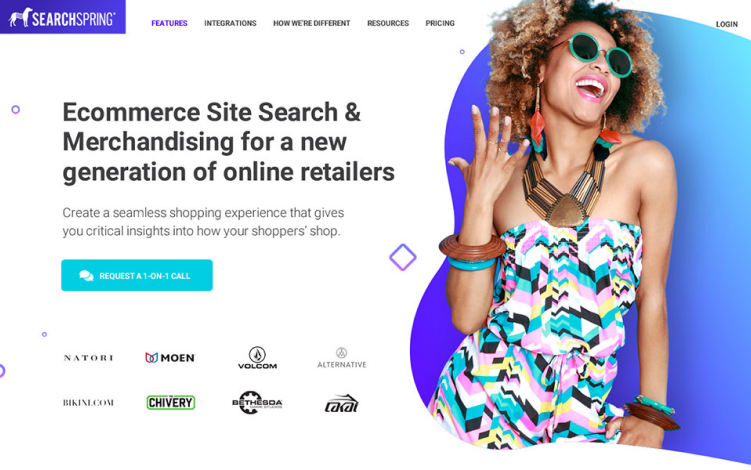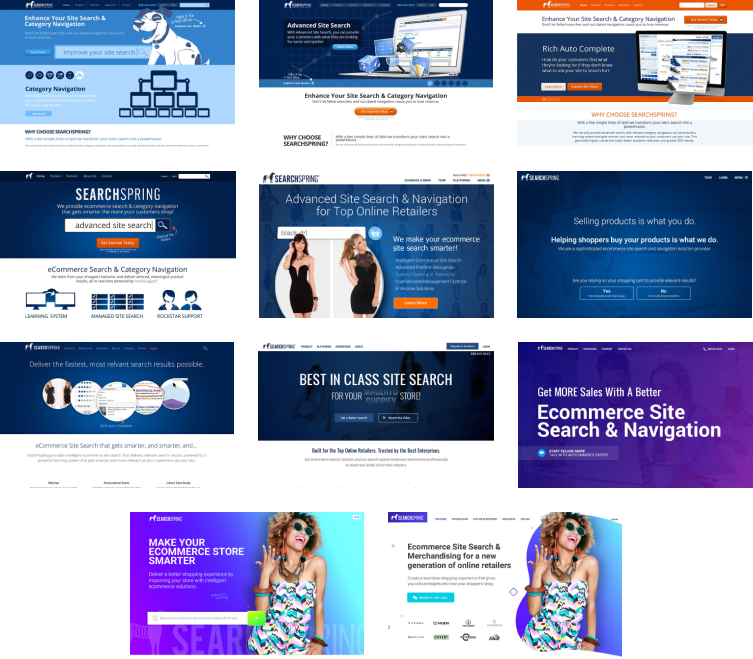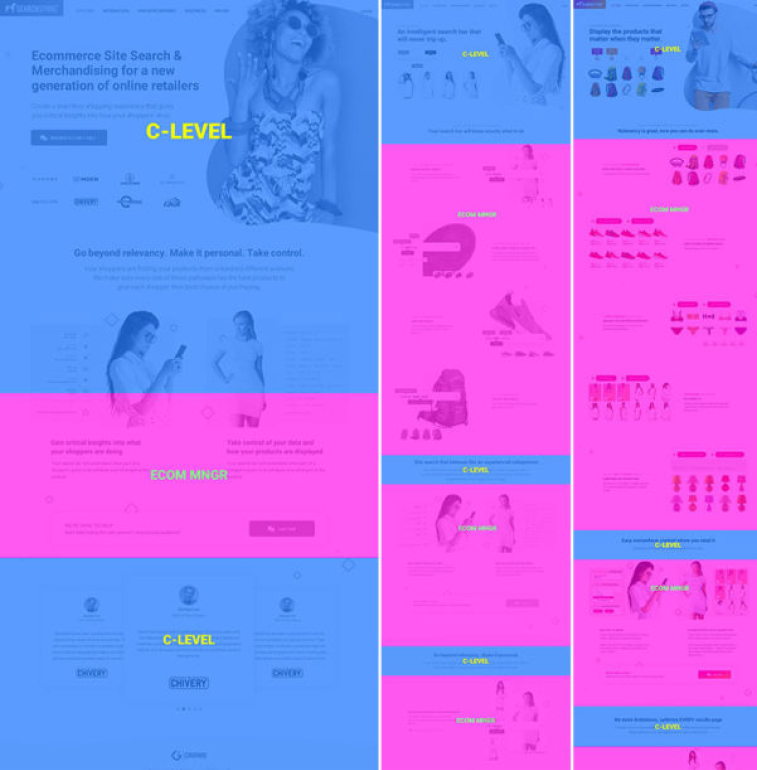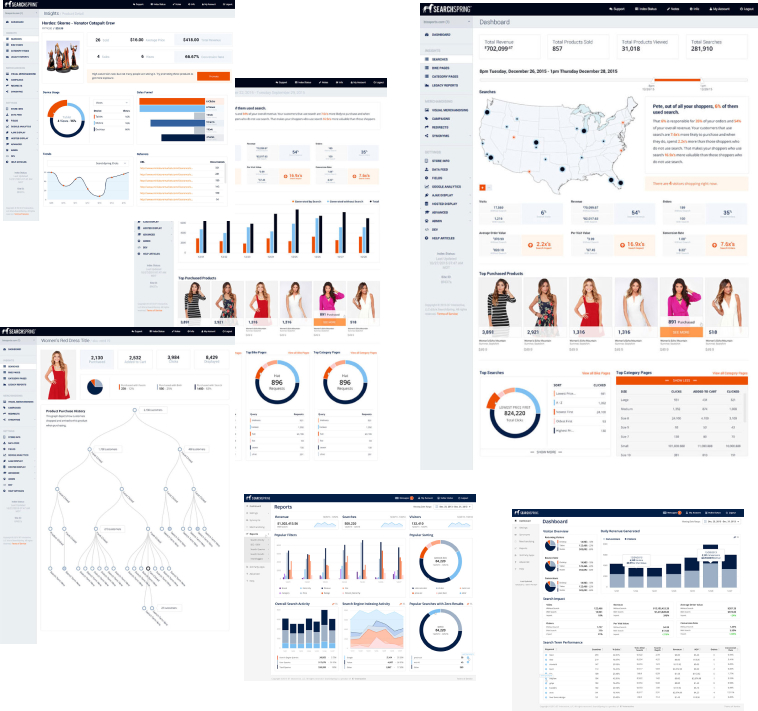8 years in the creative chair
As a creative director for a tech startup
How do you sum up 8 years with one company?
Too short and then it’s underwhelming. Too long and it’s frankly just too much.
I’m not sure I know exactly how to do this. An “about me” page isn’t something I’m used to doing. Nothing about this process (looking for a new place to call home) is “normal” for me.
But… here we go! (spoiler - it's probably on the "little" long side)
I’m a hands-on “full-stack” creative professional. A marketer who designs. A strategist who codes. An illustrator who writes.
1
Brief Summary
I started with SearchSpring way back in January 2012.
I was the 5th employee hired in the company’s history. Their first creative/marketing team member ever.
SearchSpring had two sales reps and two engineers back then.
Tradeshows, word of mouth, and industry connections WERE their marketing before I started.
From 2008 – 2012, they grew from nothing to $800k ARR.
From 2012 to 2014, we doubled the ARR.
From there, the company began to invest in and build out the sales and engineering staff.
By 2017 the ARR had grown to $5mil. Then, we finally hired 2 more team members to help with marketing – creating our first “marketing team.”
Since then SearchSpring has hit $6mil ARR, been acquired, merged with a competitor, and is ready for its next stage of growth.
I feel as though I’ve accomplished what I was hired to do. Help grow the company! I absolutely loved my time at SearchSpring. I’m ready to do it again!
2
The SearchSpring Website
The last eight years had a lot of wins.
There were also a LOT of losses and opportunities to learn. For me, that began and ended with the marketing website.

Strategy, content, design, code, tracking, lead-gen, campaigns… I had ample opportunities to play, experiment, fail, learn and grow.

Over the years the ecommerce market changed, a lot!
- Competitors changed their product offerings.
- The ecommerce platforms got bigger and smarter.
- Massive amounts of VC funding stacked against us.
So, over time, our product changed, our target MRR grew from $99 a month to $1000 a month and vacillated somewhere in the middle for years.
With that, our ideal customer changed… more than once.
Each time that happened, our customer profiles had to change, our targeting changed, our branding had to appeal to a different subset within our market, etc…
We went through hundreds of small tweaks and a few complete overhauls.
Each time we did this… man, we learned A LOT!!!
Eight years of trial and error, learning why something didn’t work, what to do instead, and repeat.
3
How I Look At Strategy
Let’s call this the cliff notes version of the 50k foot view.
I’ve documented a more in-depth oversight into how I look at things and build out strategy with these resources.
How to target and convert the C-Level with your marketing website
See the resourceEverything you need to know BEFORE you undergo a redesign
See the resourceHow an efficient marketing dept. with creative can operate
See the resourceSearchSpring’s customer persona
SearchSpring adds an intelligence layer to ecommere stores and enhances the feature set so store owners can do what their platform doesn’t let them do by default.
However, SearchSpring sits somewhere around the bottom of the list for store owners when adding to their tech and management stack.
The ideal prospect has a considerable tech stack before they ever get to us.
They have their platform, a PIM, a shipping service, tax service, ERM, CRM, social and email campaign tools, etc…
On average, our ideal persona has around $50k in monthly subscription fees BEFORE they get to us.
Needless to say, when someone is looking at us or a competitor, they are NOT doing so out of impulse.
Add to that, we’re complicated. When you integrate us, you’re touching a HUGE part of your store.
It’s expensive both in time and resources.
By the time someone gets to us, there’s very little education that needs to take place to encourage them that they need someone like us.
They’re already aware of their deficiencies and are looking for a provider they can trust.
People DO NOT buy the best option. They buy the LEAST RISKY option.
So, who would be spending time looking for someone like us?
What pain are they experiencing, and what value do they think they’ll get by integrating a solution like ours?
And, most importantly, how can we hook into that problem, eliminate the risk, and get them to the next step – requesting a demo.
Instead of spending our bandwidth educating the market, we realized we needed to simply answer the question they were having at their stage of the buying process – how to choose the right vendor related questions.
How we targeted
Every deal has more than one persona. Generally, the person “buying” isn’t the persona who “found” us.
The decision-maker more times than not is a C-Level.
The C-Level relies on his team-members to find, present, and qualify any tools they need to help them do a better job to get the numbers they’re supposed to get.
For us, the C-Level is introduced to us by their ecommerce manager.
So, we needed some TOFU and MOFU lead magnets that would speak to the ecommerce manager AND their team members – the ones actually in charge of executing the day-to-day, where our tool would be used.
By and large, our best performing campaign, content, strategy… you name it. It’s been in-depth buyer guides.
Without fail at least one of our guides is used before a prospect converts and requests a demo.
The ultimate ecommerce site search guide
See the resourceHow the experts are merchandising
See the resourceWhat you should know before choosing a 3rd party provider
See the resourceThe guides serve as a great validator in our expertise
But... most people don’t read every word. They’re skimmers. Skimmers, once interested, by nature, click around quite a bit.
C-Levels skim and click around just like the managers and worker bees – however what the C-Level cares about is almost always different than what the team member cares about.
To capture both on the same site, we constructed our layout and site structure for both persona groups, at the same time.

By focusing on what matters for each persona, based on how they interact with the website...
We’re able to give them exactly what they want where they expect to find it.
Our tracking, click maps, attribution models, and a few other tricks has allowed us to perfect the site.
It’s easily the best-structured and most well-thought-out site we’ve EVER had!
Performance and results - For the past year, we’re averaging…
MQL's to demo
85%
Demo to close/win
70%
MQL yearly growth
35%
4
The Marketing Play
Content, SEO, Email, Paid...
When it comes to ecommerce and SEO, we’re a small fish in a giant pond.
Shopify Plus, Bigcommerce, and a few other major players have easily invested hundreds of thousands of dollars a year, for years, in their content and distribution.
To outrank them would be an expensive and foolish endeavor.
Instead of going head to head with volume and an exhaustive keyword target list, we focused on our bread and butter – a limited set of keywords and building out our guides.
We’re consistently on page one right next to them for our most popular terms with our guides. Variations of “ecommerce site search” and “ecommerce merchandising”.
In addition, we’ve also guest authored content pieces for the giants, like Shopify Plus, and rank page one with those articles as well.
However, organic will never be our biggest driver, not by a long shot.
Our biggest lead and demand gen pieces are email, paid, and partner referrals.
Our content and web strategy is predominately built around supporting these channels.
Here are a few resources that give a little insight on how we’ve been operating.
A content generation and marketing framework
See the resourceBreakdown of a paid campaign entry to conversion life-cycle
See the resourceHow to target prospects on a specific platform
See the resource5
Additional notable content
Content and articles written and placed
If Amazon is doing it, I should be doing it too, right?
Let's understand your needThree common UI trends ecommerce loves but should hate
Let's understand your needHow to Choose an Ecommerce Site Search Engine: 10 Criteria
Let's understand your needHow to build a better website
Let's understand your need4 questions that must be asked before designing a new website
Let's understand your needHow to choose a 3rd party provider - see through the marketing speak
Let's understand your need6
I also speak developer
You don’t go 20 years in the design industry and NOT pick up other skills.
In all eight years at SearchSpring, I’ve been the only coder for all marketing related initiatives. Of course that means the website, but it went further.
When you work at a small startup, you need to fill a lot of different shoes.
Since I was the “creative” I concepted, designed, and coded the first redesign for SearchSpring’s management console.

Even more, I was the QA stopgap for the implementation team. Before any integration went to the client for review, I was the last eyes on to make sure they did what they were supposed to do.
The tech I use:
For local development, I use to use the command line, vagrant, and a few other command-line tools, but life is much simpler now with Local by Flywheel.
I rely heavily on Gulp for task management, sass, postcss, and a few other packages.
WordPress is a beast of burden all on its own, so I have very minimal plugin reliance.
Of course, everything is optimized, minified, concatenated, and squeezed to death to achieve a high 90’s page speed score – which is no small feat for WP.
7
In summation
Hardly a robust biography of what I’ve done, do, know, or have learned over the last eight years.
But, everything mentioned above is what I’d consider being some of my more standout hallmarks during my time with SearchSpring
I have absolutely loved what I’ve done, its been fun.
I can’t wait to do it again








